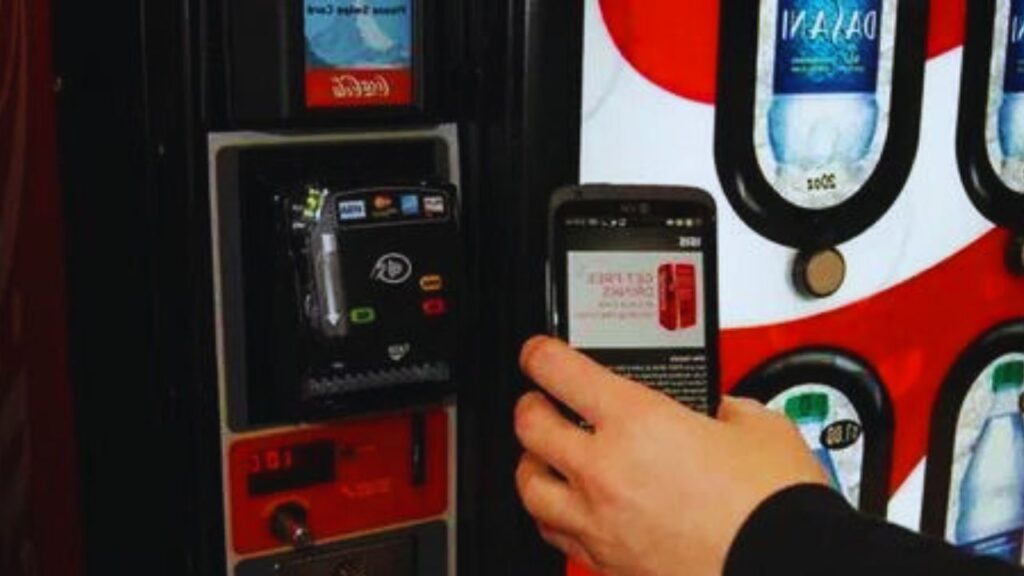These days, vending machines are a necessary component of modern convenience, offering snacks, beverages, and various products with ease. However, encountering issues with vending machine card readers can frustrate owners and customers. When the card reader malfunctions, it disrupts the seamless transaction process and affects business operations. In this article, we delve into the common reasons behind Vending Machine Card Reader Not Working, explore the impact of such malfunctions, provide troubleshooting tips, discuss DIY solutions, offer preventive measures, explore alternative payment options, and look into future trends in vending machine technology.
Vending Machine Card Reader Not Working
Encountering a vending machine with a malfunctioning card reader is more than just an inconvenience—it disrupts the seamless transaction process and impacts both businesses and customers. The frustration of not being able to make a purchase swiftly can lead to lost revenue for vending machine owners and dissatisfaction for consumers. When faced with a vending machine card reader not working, troubleshooting becomes essential to identify the underlying issue. This post will examine the typical causes of card reader malfunctions, offer troubleshooting tips, explore DIY solutions, discuss preventive measures, and highlight alternative payment options to mitigate the inconvenience caused by such malfunctions.
Vending Machine Card Reader Issues
Vending machine card reader issues pose significant challenges for both operators and consumers alike. When the card reader malfunctions, it disrupts the seamless transaction process, leading to frustration and inconvenience. Operators may experience revenue loss due to missed sales opportunities, while customers are left unable to make purchases efficiently. These problems may have several root causes, including hardware malfunctions, software glitches, and connectivity issues. Understanding the root causes and implementing effective troubleshooting strategies is essential to ensure uninterrupted vending machine operations. In this article, we’ll explore the common challenges associated with vending machine card reader issues and provide insights into troubleshooting and resolution methods.

Vending Machine Card Reader Failures
Vending machine card reader failures present a significant obstacle to smooth transactions and customer satisfaction. Whether due to hardware malfunctions, software glitches, or connectivity issues, these failures disrupt the convenience and efficiency expected from vending machines. Such malfunctions not only inconvenience customers but also result in revenue loss for operators. Addressing these failures promptly is crucial to maintaining operational efficiency and maximizing revenue streams. In this article, we’ll delve into the various reasons behind vending machine card reader failures, explore their impact on business operations and customer experience, and discuss effective troubleshooting and preventive measures to mitigate such issues.
Common Causes of Card Reader Malfunctions
Common causes of vending machine card reader malfunctions stem from hardware, software, and connectivity issues. Hardware malfunctions, such as worn-out card reader components or physical damage, can impair the reader’s functionality. Software glitches, including outdated firmware or programming errors, may lead to erratic behavior or complete failure. Additionally, connectivity issues, such as poor internet connection or network disruptions, can hinder communication between the card reader and the payment processing system. Identifying these common causes is essential for effective troubleshooting and preventive maintenance strategies to ensure smooth and reliable operation of vending machine card readers, minimizing disruptions to transactions and maximizing customer satisfaction.
Quick Fixes for the Card Reader Not Working
When faced with a vending machine card reader not working, quick fixes can often resolve the issue swiftly. Simple actions like cleaning the card reader slot to remove dirt or debris, restarting the machine to reset any software glitches, or updating the software to fix compatibility issues are effective initial steps. Additionally, ensuring a stable power supply and verifying internet connectivity can address underlying hardware or connectivity issues. These quick fixes empower operators to swiftly restore functionality to card readers, minimizing downtime and ensuring uninterrupted service for customers. However, if these solutions prove ineffective, further troubleshooting or professional assistance may be necessary.

Card Reader is Unresponsive
These problems may have several root causes. There might be other underlying explanations for these issues. Next, verify the internet connection, as connectivity issues can hinder communication with the payment processing system. Inspect the card reader components for any physical damage or obstructions. If the problem persists, restarting the machine may reset any software glitches. Updating the software can also address compatibility issues. Taking these steps systematically enables operators to troubleshoot and resolve card reader unresponsiveness effectively, ensuring seamless transactions for customers.
Dealing with Technical Glitches in Card Readers
Operators should begin by identifying the specific nature of the glitch, whether it’s hardware-related, software-related, or connectivity-based. Once identified, appropriate troubleshooting steps can be taken, such as restarting the machine, updating software, or checking for physical damage. If the glitch persists, contacting technical support or a professional technician may be necessary for further diagnosis and repair. Promptly addressing technical glitches in card readers is crucial to maintaining customer satisfaction and maximizing revenue streams from vending machine transactions.
Detect a Faulty Card Reader
Identifying a faulty vending machine card reader requires keen observation and systematic assessment. Operators should first look for physical signs of damage or wear, such as broken components or loose connections. Testing the card reader with various payment methods can reveal inconsistencies or errors in functionality. Additionally, monitoring transaction logs for irregularities, such as failed transactions or declined payments, can indicate potential issues with the card reader. Regular maintenance checks and proactive monitoring are essential to swiftly identify and address faulty card readers, ensuring uninterrupted service and maximizing revenue generation from vending machine operations.
Tips for Handling Card Reader Errors
Efficiently managing card reader faults in vending machines is essential to preserving seamless operations and ensuring consumer happiness. Firstly, document the error message displayed and note any relevant details. Attempt to troubleshoot the issue by restarting the machine or checking for connectivity problems. If the error persists, contact technical support or a qualified technician for assistance. Regular maintenance and software updates can prevent recurring errors. Additionally, adequate training should be ensured so that staff members can handle common card reader errors effectively. Promptly addressing these errors minimizes downtime, preserves revenue streams, and ensures a seamless experience for customers interacting with the vending machine.

Assessing and Rectifying Card Reader Problems
Start by carefully evaluating the card reader’s operation and looking for any physical damage, software glitches, or connectivity issues. Once the problem is identified, take appropriate measures to rectify it, such as cleaning the card reader slot, updating software, or troubleshooting connectivity problems. Regular maintenance and proactive monitoring can help prevent future issues. Promptly addressing card reader problems ensures seamless transactions for customers and preserves revenue streams for vending machine operators.
Possible Solutions for Card Reader Issues
Start by diagnosing the specific problem, whether it’s hardware-related, software-related, or connectivity-based. Implementing troubleshooting steps such as cleaning the card reader, updating software, or checking internet connectivity often resolves minor issues. For more complex problems, seeking professional assistance from technicians or contacting technical support may be necessary. Additionally, investing in regular maintenance and upgrades can prevent future issues and ensure seamless transactions. By exploring and implementing appropriate solutions, vending machine operators can minimize downtime and enhance customer satisfaction.
Overcoming Challenges When Card Reader Fails
Operators must swiftly assess the situation, identifying the root cause of the failure, whether it be hardware malfunctions, software glitches, or connectivity issues. Implementing troubleshooting steps such as restarting the machine, updating software, or checking for physical damage can help resolve minor issues. In more complex cases, seeking professional assistance or contacting technical support may be necessary. By addressing challenges promptly and effectively, operators can minimize downtime, preserve revenue streams, and ensure a seamless experience for customers interacting with the vending machine.
Resolving Card Reader Downtime
Strategies for resolving vending machine card reader downtime involve a combination of proactive maintenance, effective troubleshooting, and swift resolution. Operators should establish regular maintenance schedules to prevent potential issues and ensure optimal performance. When downtime occurs, promptly assess the situation to identify the cause, whether it’s hardware malfunctions, software glitches, or connectivity problems. Implement troubleshooting steps such as restarting the machine, updating software, or checking for physical damage. If necessary, seek professional assistance or contact technical support for further diagnosis and repair. By employing these strategies, operators can minimize downtime, maintain customer satisfaction, and preserve revenue streams from vending machine transactions.
Card Reader Inoperability
Begin by assessing the situation to identify the root cause, whether it’s hardware malfunctions, software glitches, or connectivity issues. Implement troubleshooting steps such as checking the power supply, verifying internet connectivity, and inspecting card reader components for damage or obstructions. If the issue persists, restart the machine, update the software, or contact technical support for assistance. Regular maintenance and proactive monitoring can prevent future inoperability issues. By following these steps diligently, operators can minimize downtime, preserve revenue streams, and enhance customer satisfaction with uninterrupted vending machine services.
Diagnostic Procedures for Card Reader Failures
Diagnostic procedures for vending machine card reader failures involve a systematic approach to pinpoint and address underlying issues swiftly. Begin by examining the physical condition of the card reader for any visible damage or obstructions. Test the reader with different payment methods to identify inconsistencies or errors in functionality. Monitor transaction logs for irregularities such as failed transactions or declined payments. If necessary, restart the machine, update software, or troubleshoot connectivity problems. Seeking professional assistance or contacting technical support may be required for complex issues. Regular maintenance and proactive monitoring are essential to prevent future failures and ensure seamless vending machine operations.
Restore Functionality to a Faulty Card Reader
Restoring functionality to a faulty vending machine card reader requires a systematic approach to swiftly address the underlying issues. Begin by assessing the nature of the fault, whether it’s hardware-related, software-related, or connectivity-based. Conduct thorough troubleshooting steps such as checking the power supply, inspecting card reader components for damage, updating software, or troubleshooting connectivity problems. Restart the machine to reset any software glitches and ensure proper functioning. If the issue persists, For more diagnostic and repair, speak with technical support or a certified professional. Implementing these practical steps promptly ensures uninterrupted service and enhances customer satisfaction with the vending machine.
Repairing Card Reader Problems
Repairing vending machine card reader problems effectively involves adhering to best practices to minimize downtime and ensure seamless operations. Start by diagnosing the issue accurately, whether it’s hardware malfunctions, software glitches, or connectivity issues. Implement troubleshooting steps such as cleaning the card reader slot, updating software, or checking for physical damage. If necessary, seek professional assistance or contact technical support for specialized expertise. Regular maintenance and proactive monitoring can prevent future issues. Prioritize quick resolution to preserve revenue streams and maintain customer satisfaction. By following these best practices diligently, operators can ensure the swift and efficient repair of vending machine card reader problems.
Conclusion
Encountering a vending machine card reader not working is more than just a minor inconvenience—it disrupts the seamless transaction process, leading to frustration for both operators and customers. Understanding the common reasons behind card reader failures, exploring troubleshooting methods, and implementing preventive measures are crucial steps in ensuring uninterrupted vending machine operations. Promptly addressing card reader issues through systematic diagnosis and effective repairs is essential for preserving revenue streams and enhancing customer satisfaction. By prioritizing maintenance and proactive monitoring, operators can minimize downtime and maintain the reliability of vending machine card readers, thus optimizing the overall vending experience for all stakeholders.
FAQs
Q1. Why do vending machines stop working?
The coin mechanisms jamming is one of the most common problems with vending machines. Customers may be prevented from adding coins as a result, or the machine may dispense the wrong change. You must open the coin mechanism and remove any debris or blockages in order to resolve this issue.
Q2. How can I troubleshoot a malfunctioning card reader?
You can troubleshoot a malfunctioning card reader by checking the power supply, verifying internet connectivity, inspecting card reader components for damage, and updating software.
Q3. Can I fix the card reader myself?
Depending on the nature of the issue, you can fix the card reader yourself by following troubleshooting steps, such as cleaning the card reader slot or restarting the machine. However, for complex issues, it’s advisable to seek professional assistance.
Q4. Are there alternative payment methods available?
Yes, there are alternative payment methods available, including cash payments, mobile payments, and QR code payments, which can be used if the card reader is not working.
Q5. What should I do if I need help with the troubleshooting steps?
If none of the troubleshooting steps work, it’s recommended to seek professional help from technicians or contact technical support for further diagnosis and repair.

